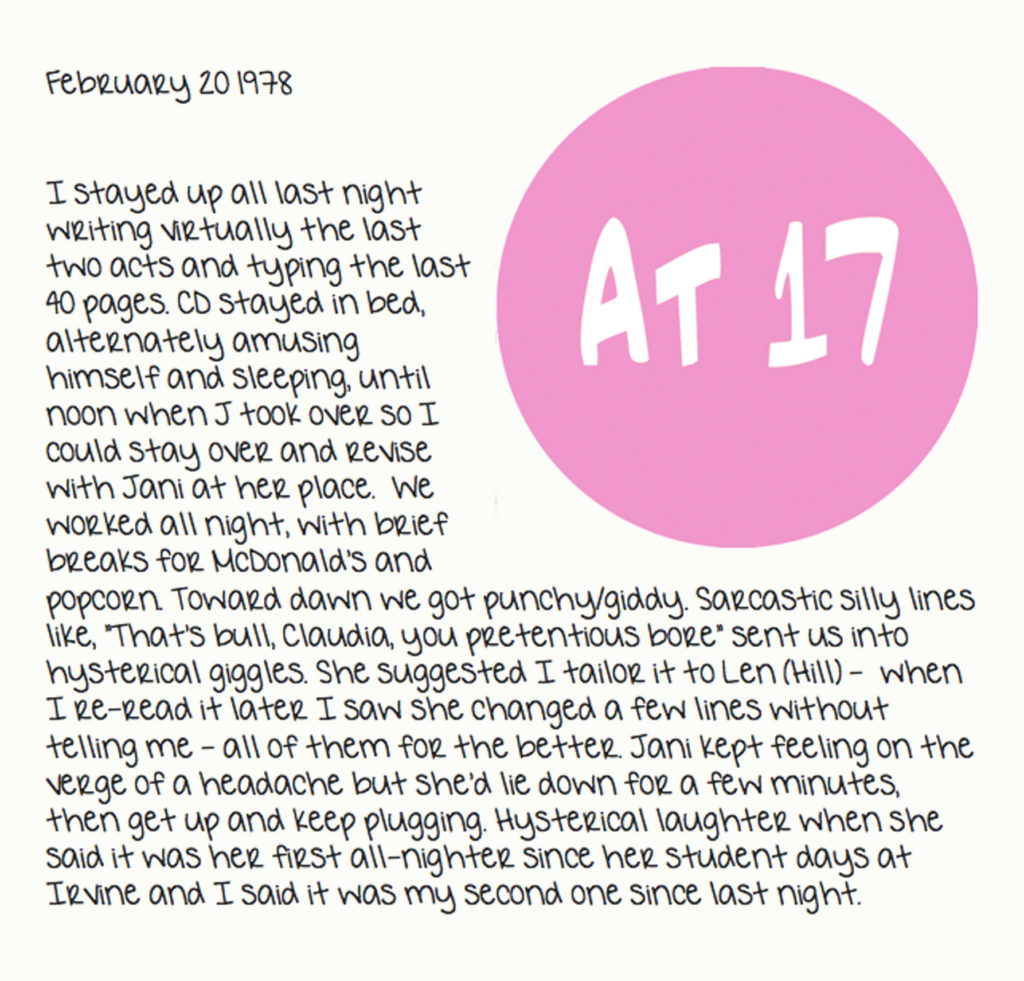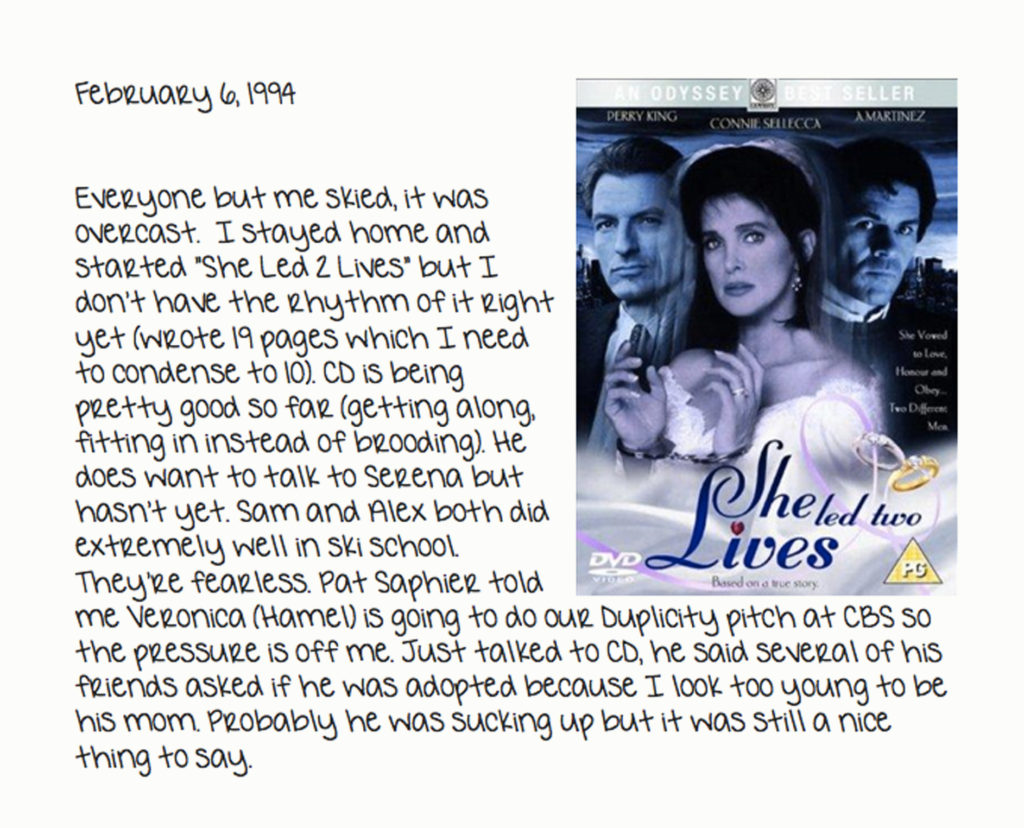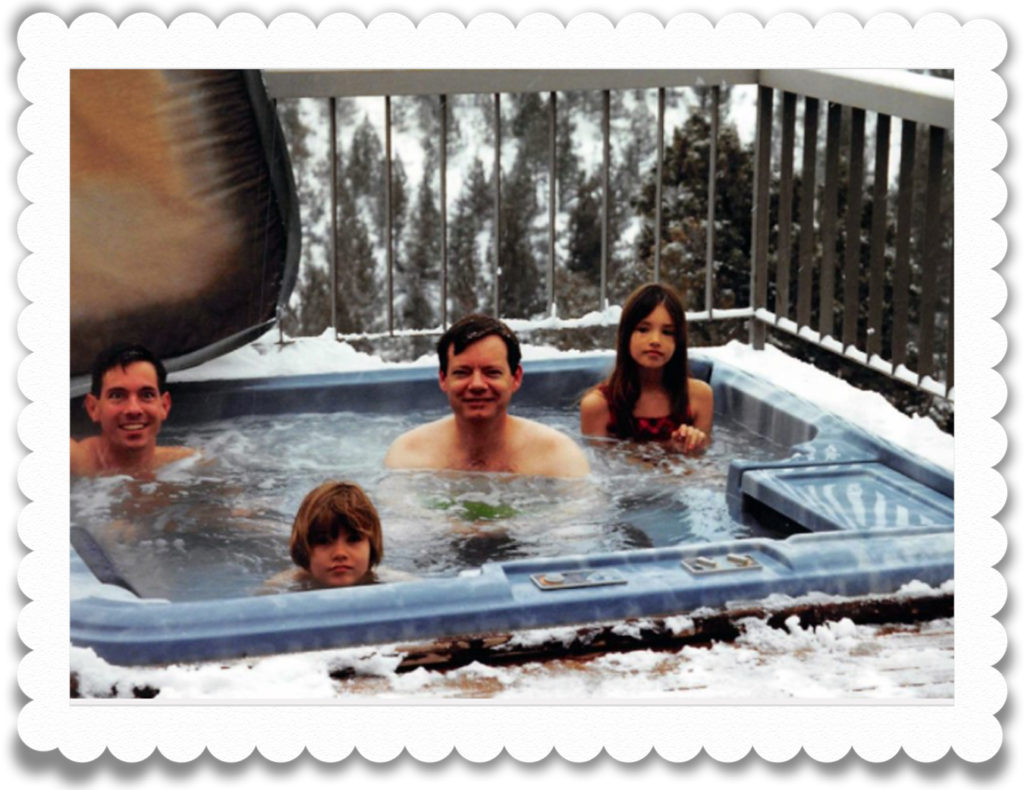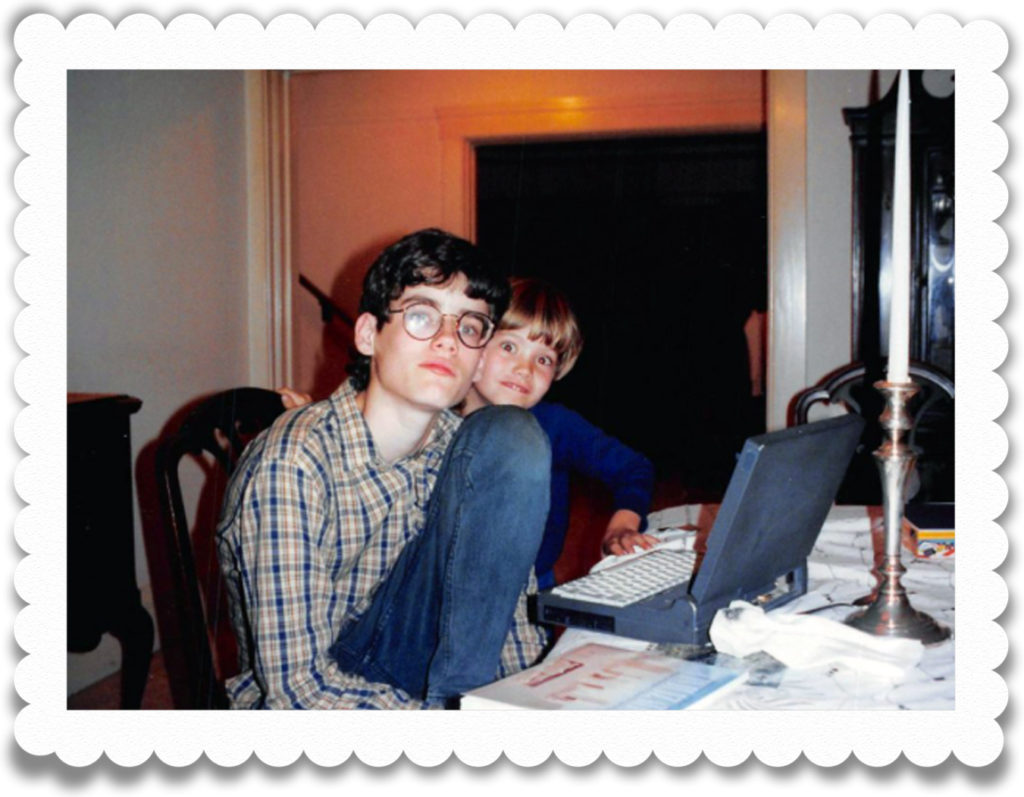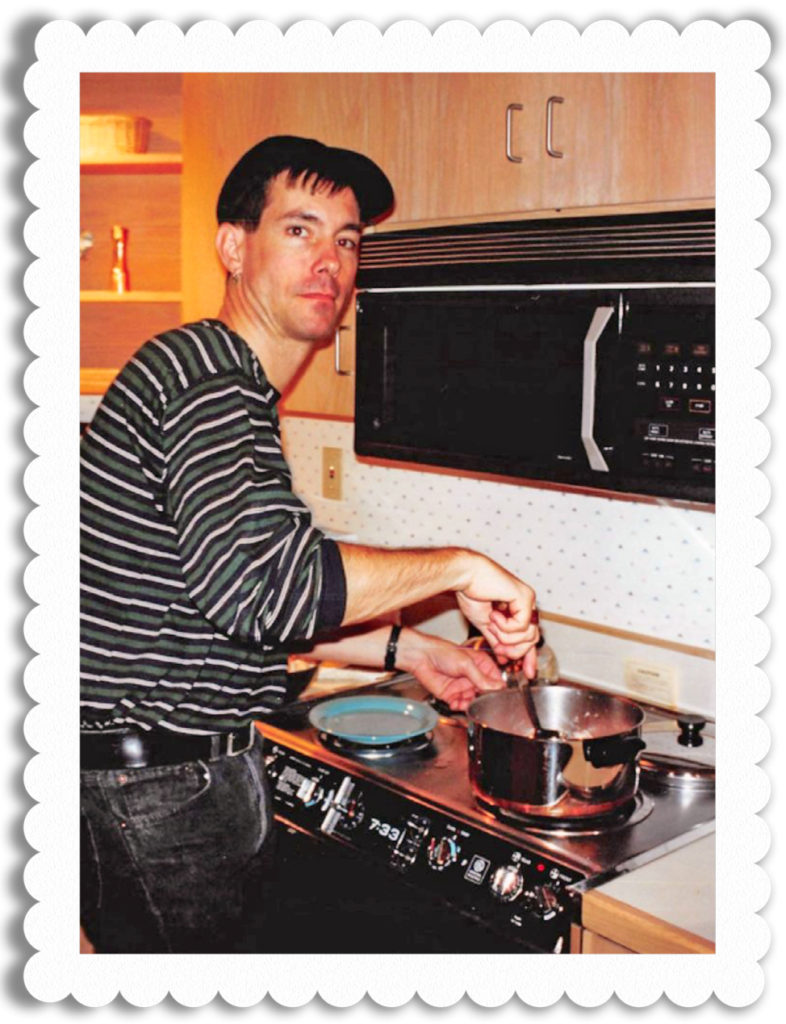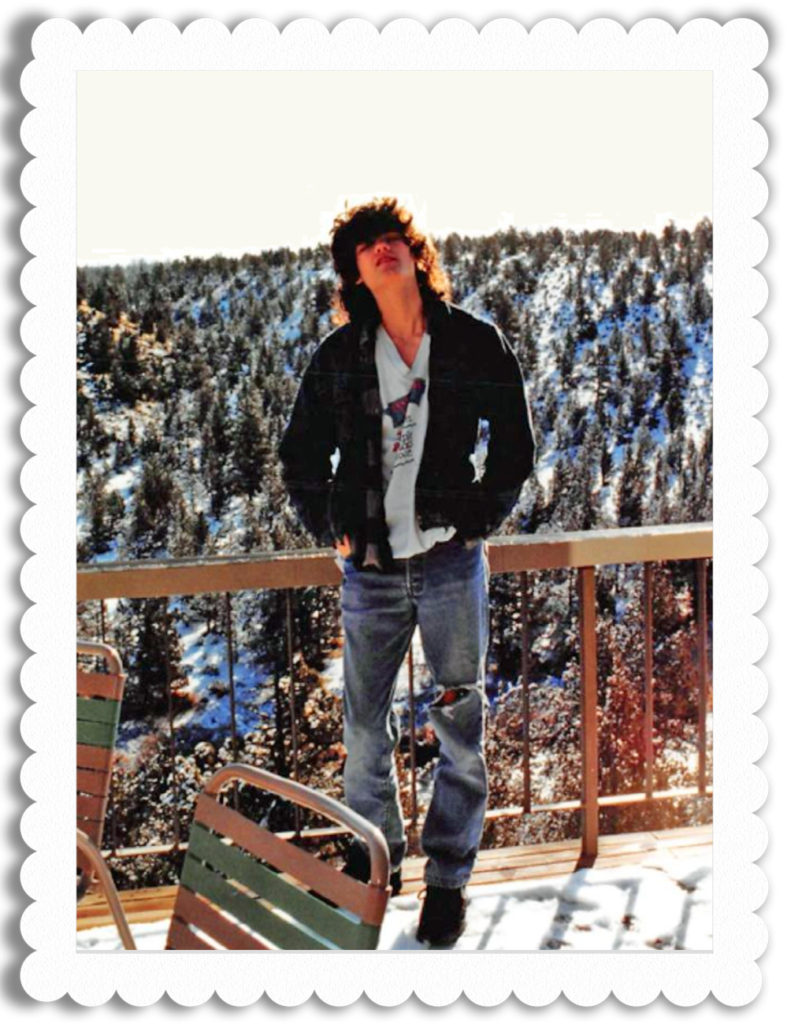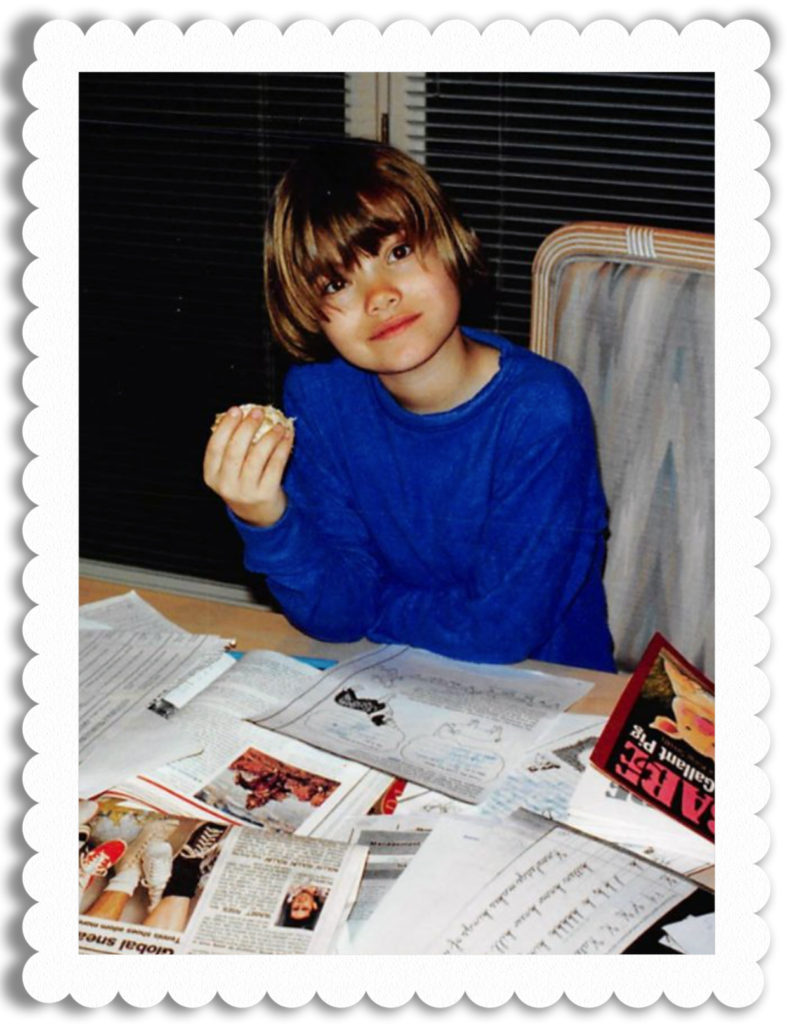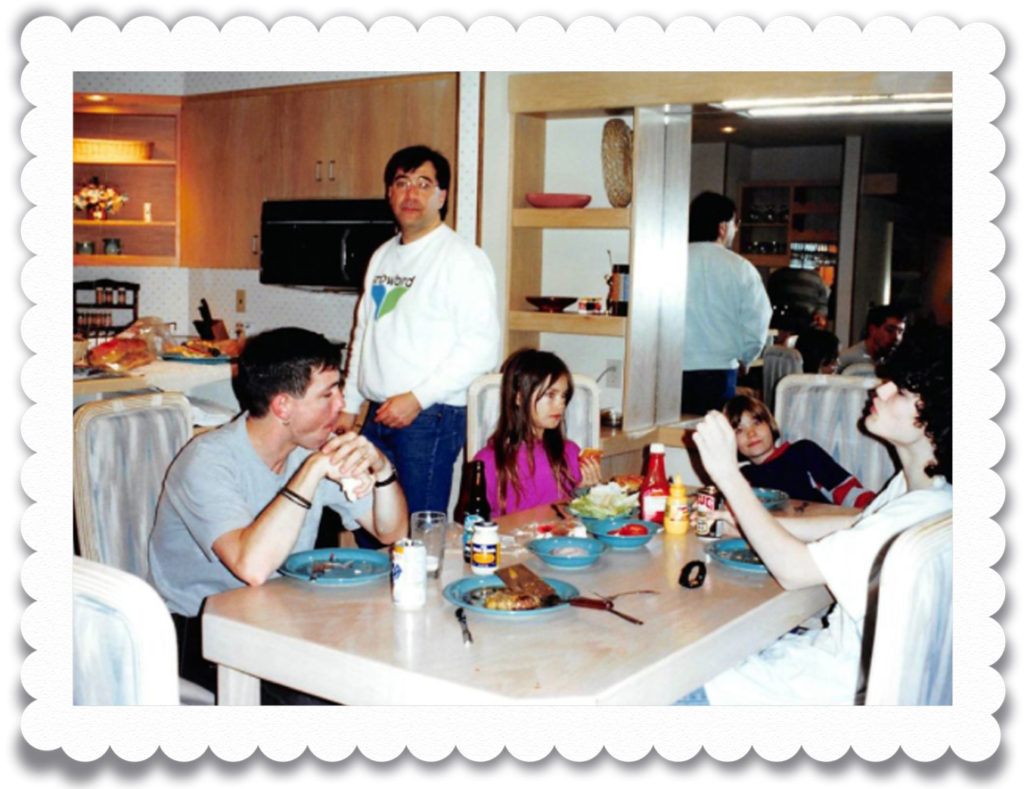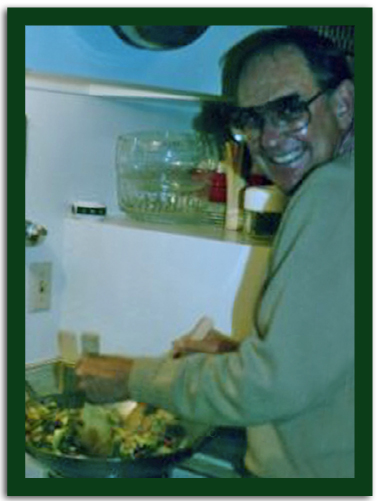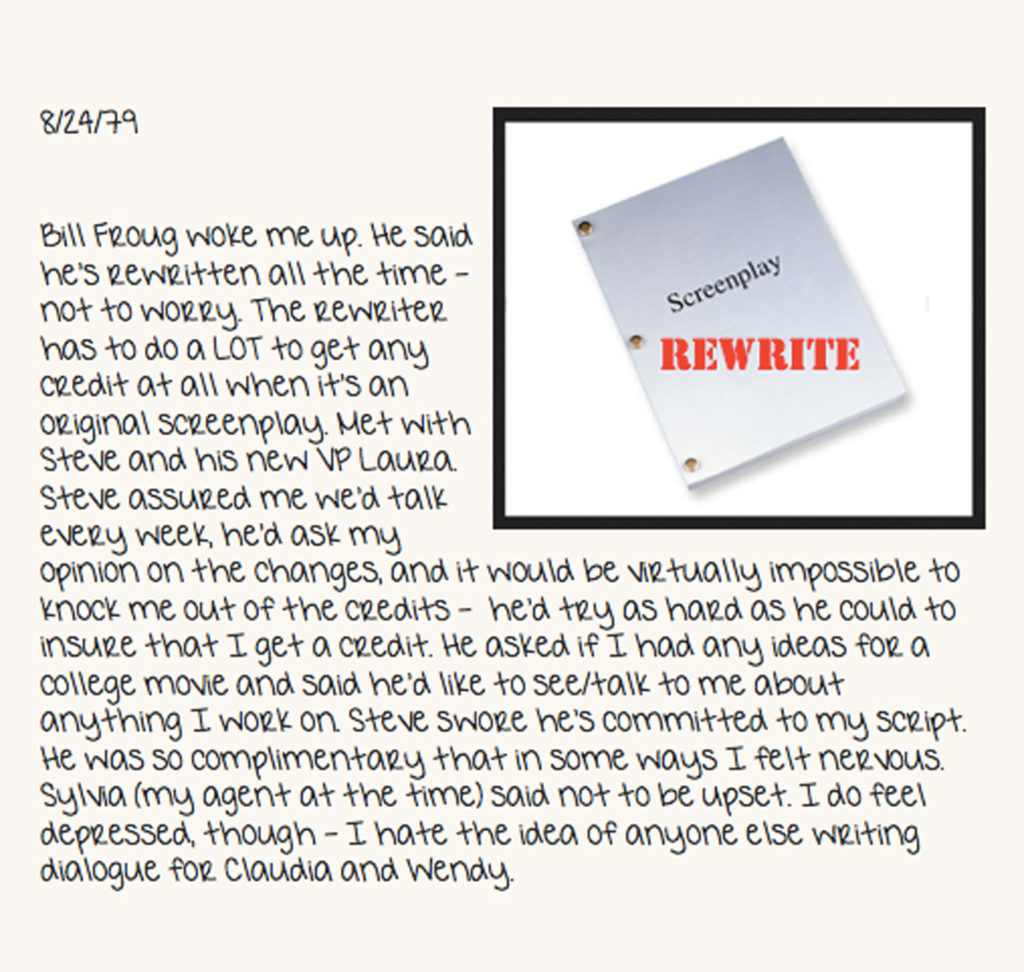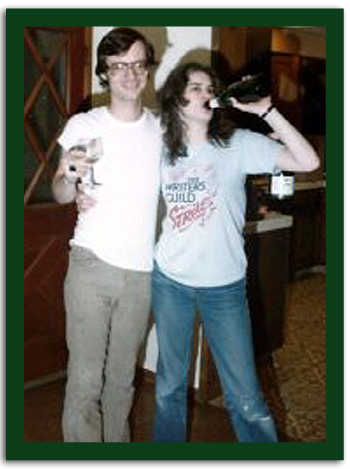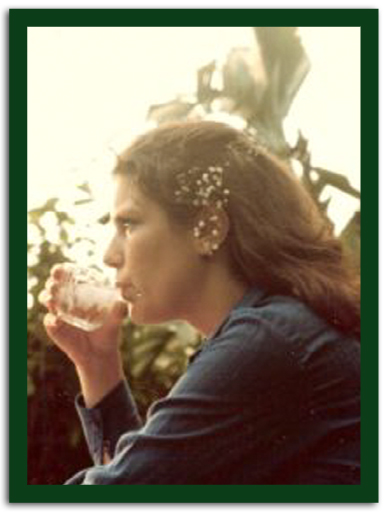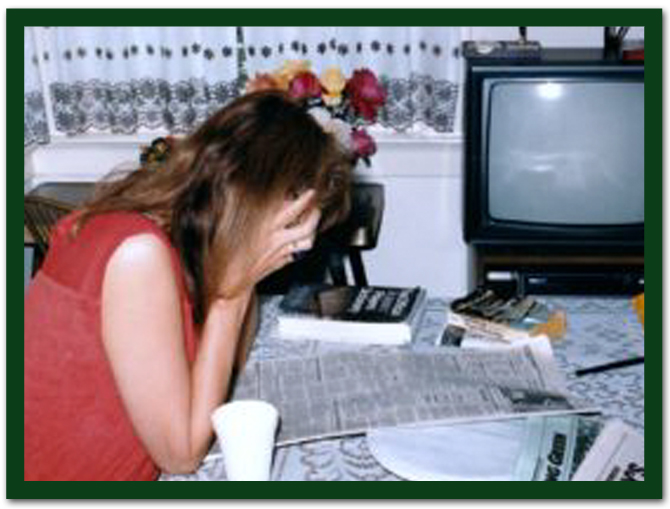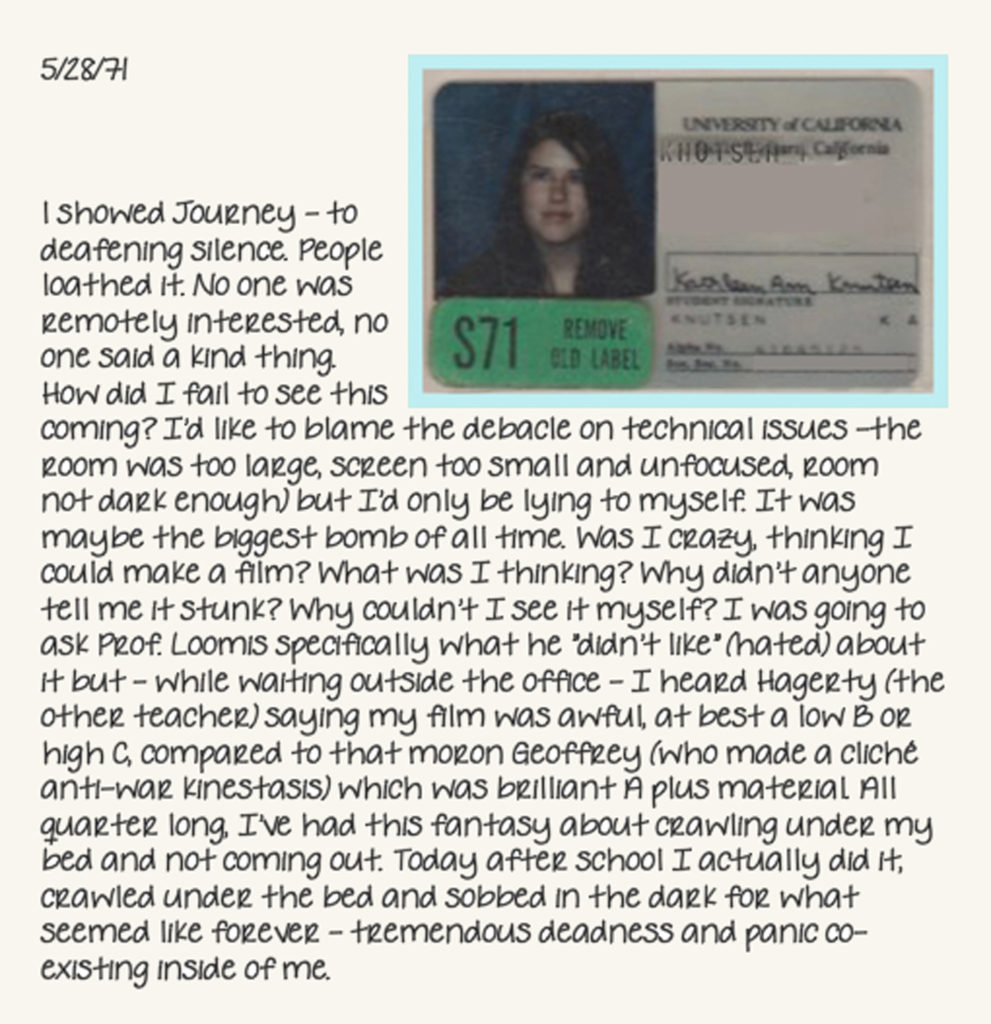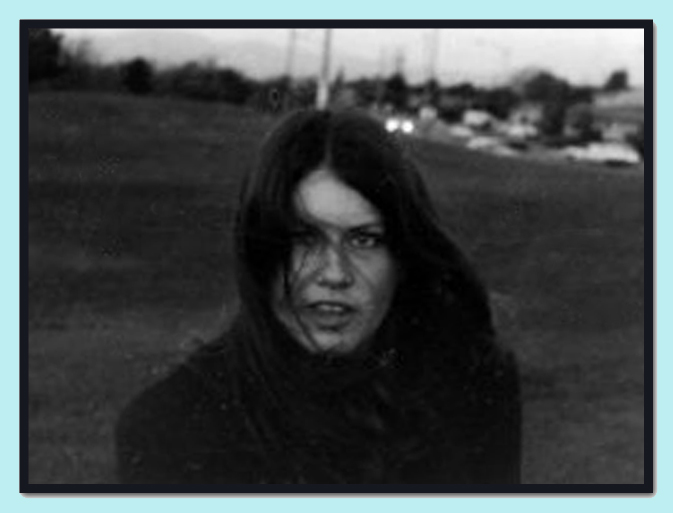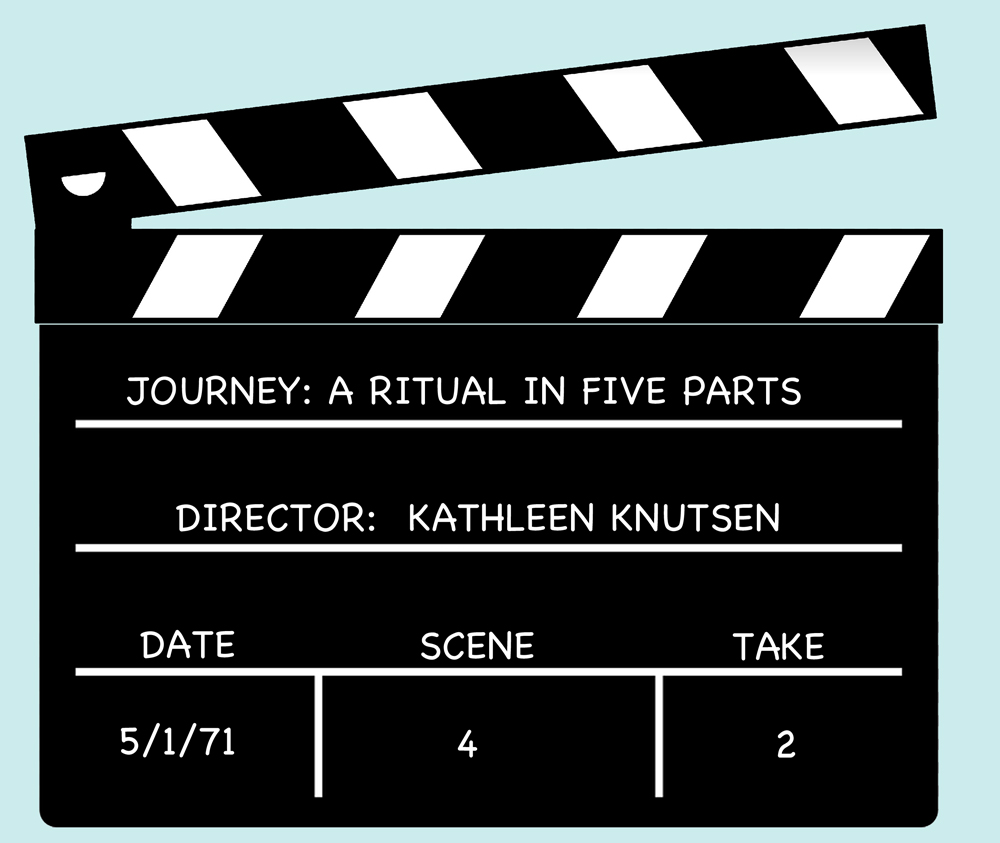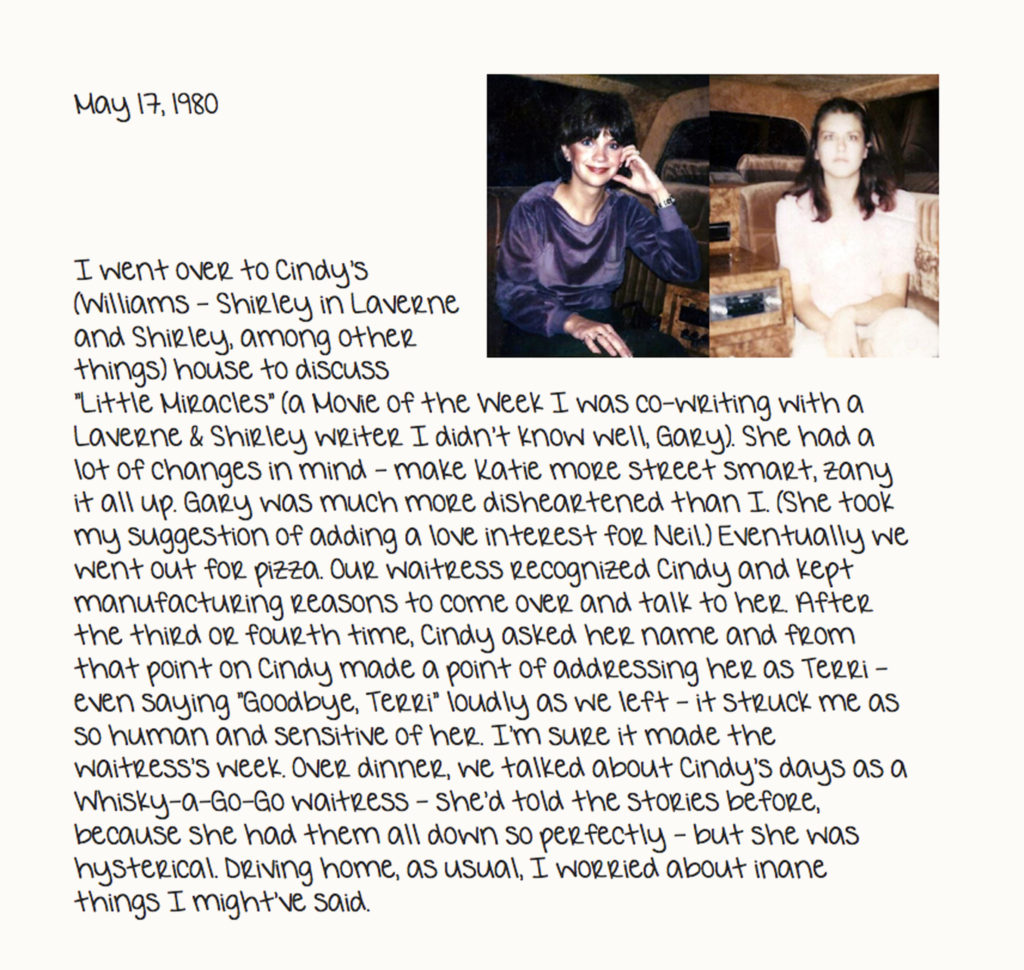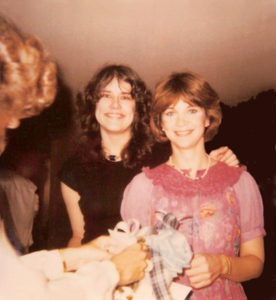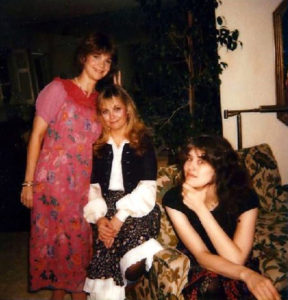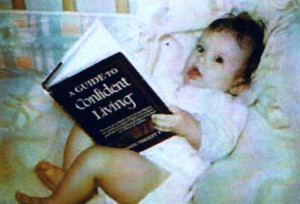The script I refer to here turned out to be my breakthrough spec script “At 17”, inspired by and loosely based on the brilliant Janis Ian song of the same title. I didn’t have the rights – I don’t know if anyone actually did – but ABC was developing it as a Movie of the Week (MOW).
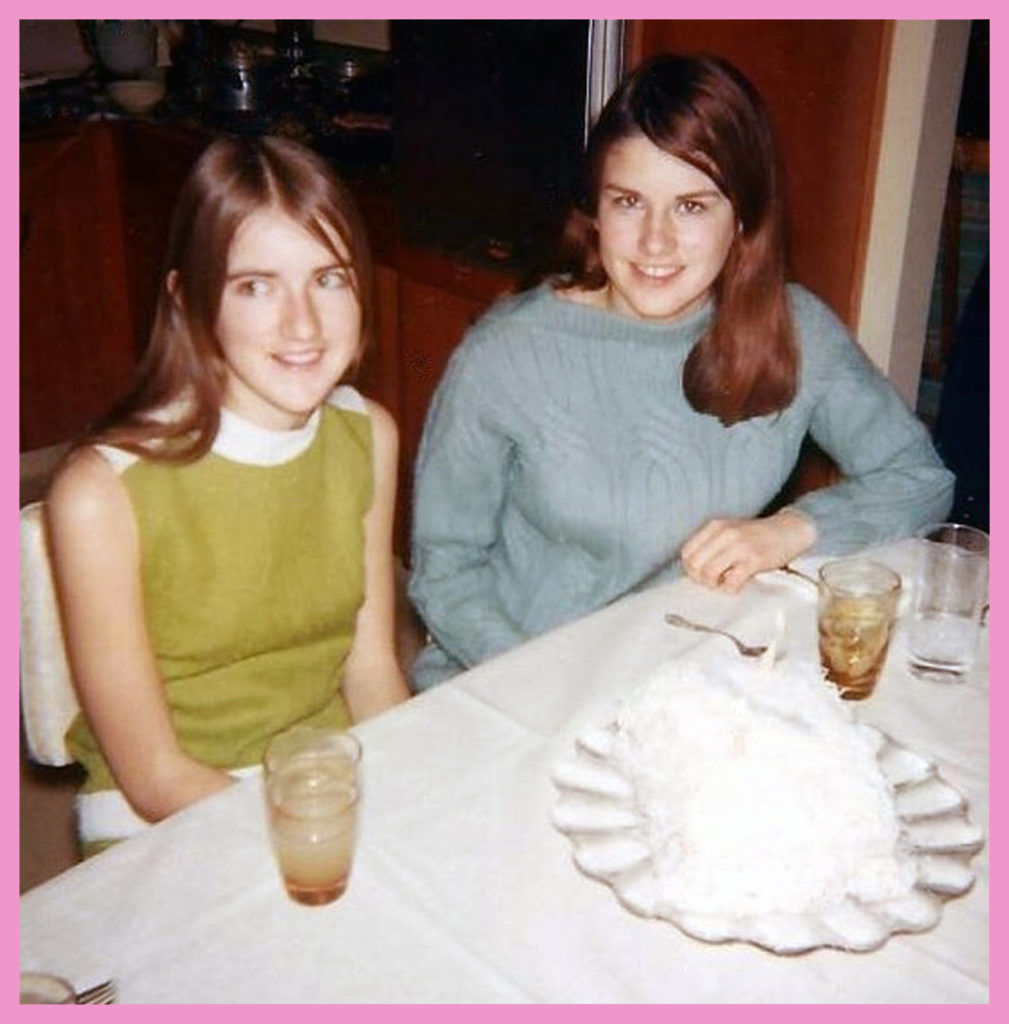
My former boss at NBC, the late and much lamented Len Hill, was one of the ABC executives in charge of MOWs; my sister Janet was his assistant/secretary. He told me if I could write a brilliant script in the next ten days he’d consider it equally with the scripts the network paid for. Ten days isn’t enough to write a great script from scratch under any circumstances and it wasn’t the best of times for me. My son CD was 14 months old but well on his way to the terrible twos.
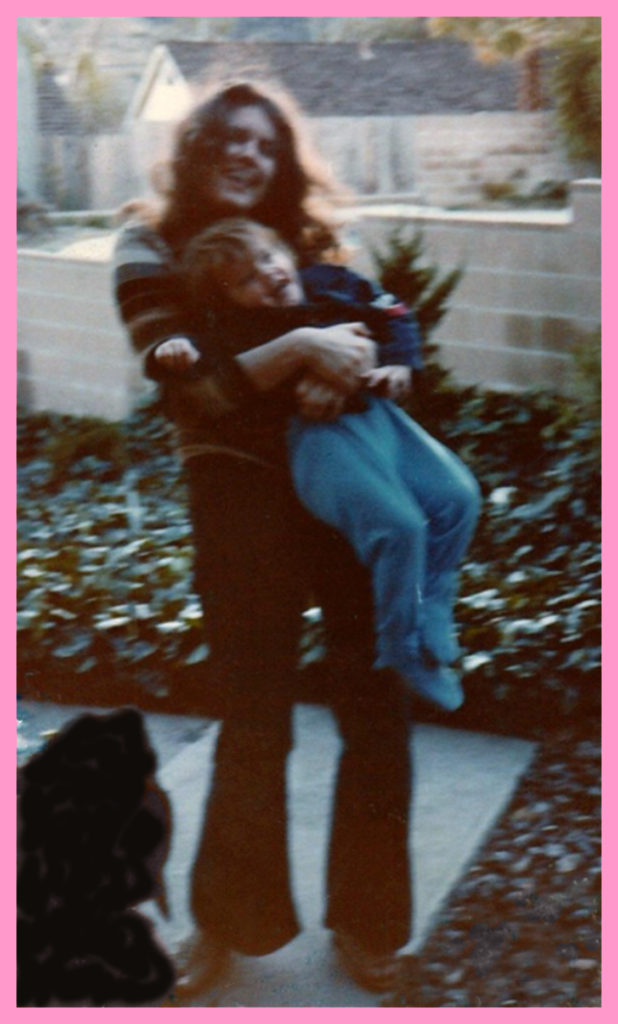
Nonetheless, I gave it my best shot. The tension was so high I threw up on some of those late nights (gross, I know) but – with Jani’s assistance – I finished it. I don’t think Len or anybody else expected me to do it.
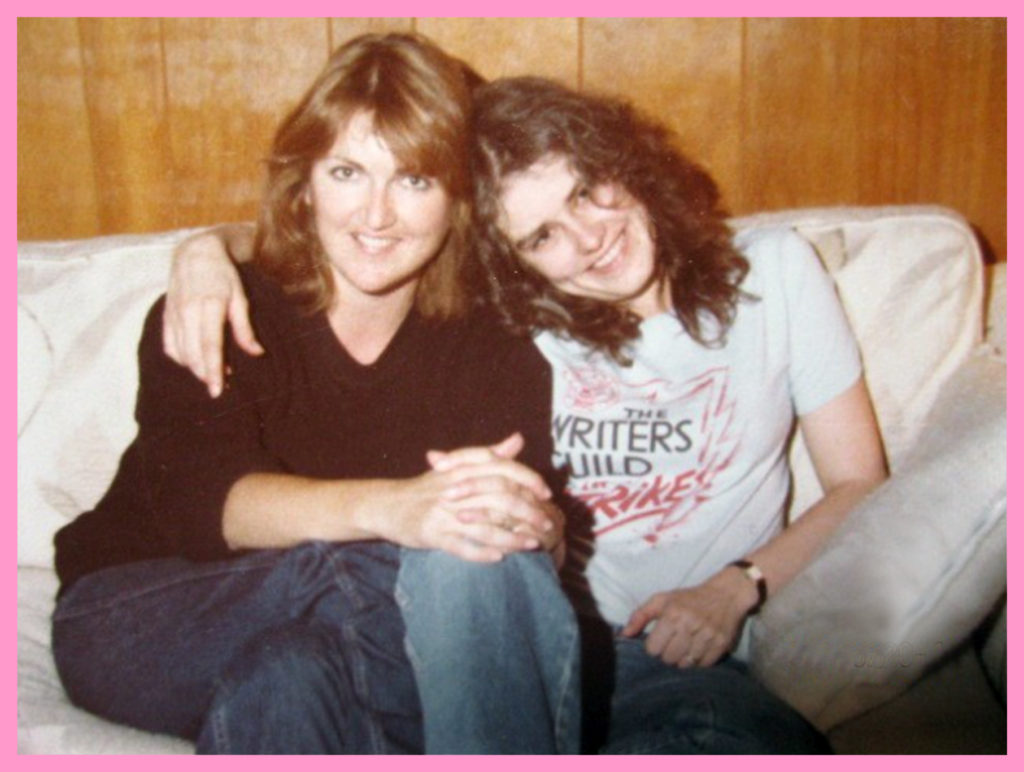
The problem was – it wasn’t good enough. The network preferred the writer who cashed their big checks. The rejection was so devastating I gave up until my pride and desire for revenge resurrected me. “I’ll show you,” I thought. “I’ll do a great rewrite and prove you were wrong to dismiss me.”
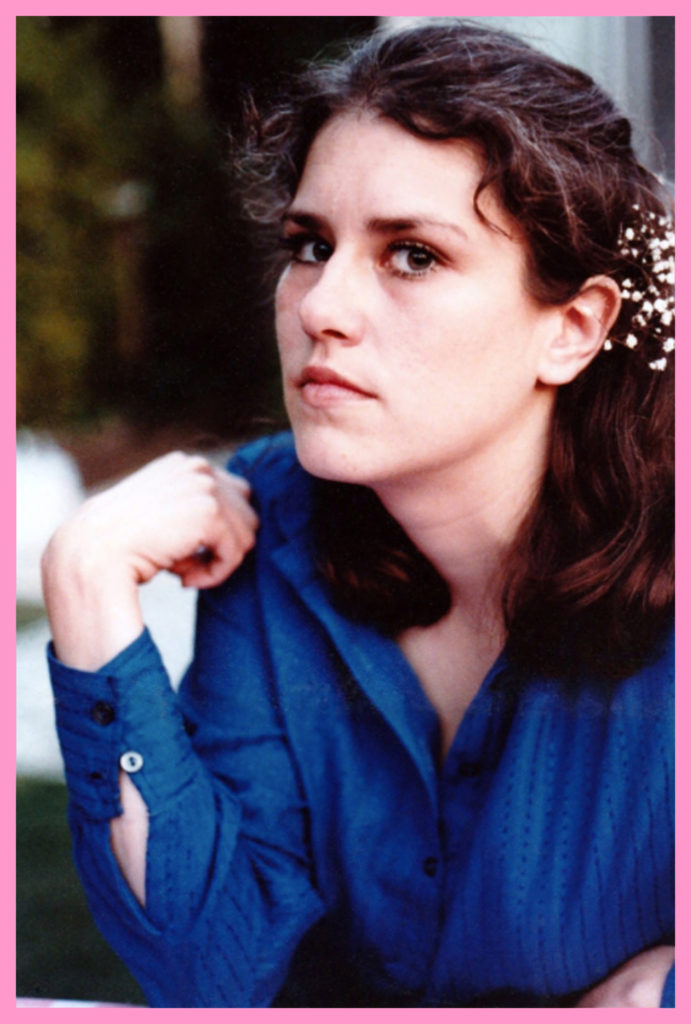
Did I succeed? I think so. Although the film never got made, it was optioned three times and garnered interest from directors like Martha Coolidge and Amy Heckerling. Years after Molly Ringwald aged out of playing a teen-ager, she told me she would’ve loved to play one of the parts. To say the least, I would’ve loved for her to play it but my script didn’t reach her at the right time.
That’s the way things go. Big ups, big downs. Victories won, battles lost, it’s hard to quantify wins and losses when script quality is so subjective and the industry’s in constant flux. The bottom line is, were those ten sleepless days and nights worth it when I failed to get what I wanted? Would I do it again? Hell, yes. If I had my life to live over, I’d try harder, reach higher and risk bigger losses. The only way to fail for good is giving up.
